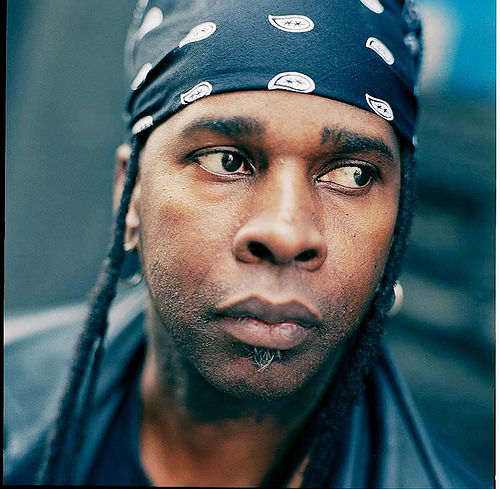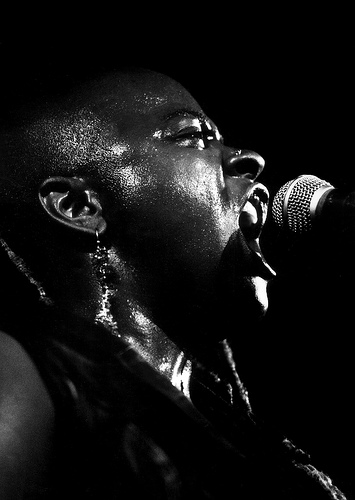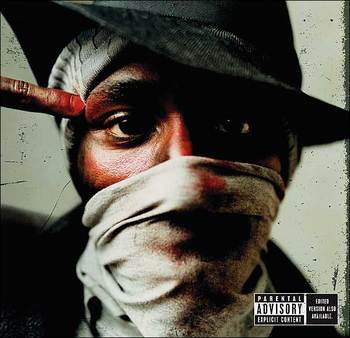I originally posted the following on MarketingPopCulture.com in October, 2006. Comments have not been brought over.
In order for the vast majority of black youth to envision better lives for themselves, we need to bring musicality back into their lives. By this I mean, get them playing instruments. Since we can’t count on the school system to get them excited about playing instruments, the impetus must come from popular culture. Black musicians have to make it seem cool again. And the only ones who are in a position to do that are black rock musicians.
But let me back up.
I realize that I’ve been thinking about this topic in some shape or form for over a decade. Back in the early 90s, I was PR director for the Black Rock Coalition. Back then, we were focused on creating an environment in which black artists who didn’t fit neatly into the R&B or rap dichotomy could break into the public consciousness and enjoy the financial rewards thereof. “Black Rock” was—and still is—perceived as an oxymoron. We used the term to represent the diversity of styles and influences that our members brought to bear in their music. It was as much a social and political statement as it was a musical one. But breaking such artists was, and remains, a seemingly insurmountable challenge. At the time, the question was, Why won’t the industry accept and support black rock? However, the music industry, like any other, responds to what’s happening in the culture. Therefore, it’s a short leap to say that black rock’s not happening in the culture, at least on a scale that warrants corporate investment. But that skirts the race issue only momentarily.
As a marketer, I’m most concerned with the “buyer” of my product, service or content. Given that, a better question is: Why haven’t audiences supported black rock on a large scale?
The most likely audience for black rock should be black people. Problem is, rock is alien to a majority of black youth. Why? For black youth, there’s no perceived, recent musical tradition in popular culture of blacks playing instruments (examples, a la John Legend or Wyclef, are the exceptions that prove the rule). Wait! There’s jazz, right? Wrong: Jazz is not a player in popular culture and, by and large, jazz is not supported by black folks. I’m going to suggest that the “chain” was broken in the late 70s or early 80s when music education programs taken out of public schools. If there’s no tradition of music education, then there’s no tradition of playing musical instruments. Ultimately, you’re left with a generation that has no appreciation—or respect—for musicianship. This does bear itself out on an anecdotal level. Look around most black American communities, and you’ll see more kids’ musical impulses channeled into hip hop. Which means that instead of starting bands, black youth are more likely to form rap crews, which focus on MCing, DJ-ing. Nothing wrong with that in and of itself. However, this experience does begin to shape an aesthetic, and aesthetics is one of the key ingredients of culture. In this sense, while I’m not necessarily talking about beauty, per se, I am trying to get at what a community—perhaps a generation–sees as valuable.
Remember Motown? Noted scholar and author Gerald Early points out that one of the reasons Motown was able to produce the music it did was because there was a highly trained pool of talent coming out of the music education programs in the Detroit public schools.
Playing an instrument has ripple effects. Once enough people learn to play instruments, then there will be performances. Performances reinforce the accomplishment of learning for the musician. Performances also acclimate an audience to going to a venue to see someone play an instrument. So what we’ve lost is the tradition of performing on instruments and of going to see said performances. Yes, going to a hip hop show is going to see a performance. However, except in rare instances, watching someone spit rhymes over a boom bap, no matter how good their writing and locution, is qualitatively different than a performance where you see artists using musical instruments. If the former is all you’ve been raised on, your expectation for the possibilities of a live performance—sound quality, as one example–are somewhat limited.
A side query: Does rock activate a different part of the brain than hip hop?
I’m not sure, but I think there’s some correlation to the powerful forces battering the black community in the late 70s/early 80s: music education programs were shut down; the black unemployment rate skyrocketed to nearly 22% (1983); the crack epidemic; gang violence and subsequent imprisonment of a large percentage of black males. Hip hop took off under those conditions of deprivation. As such, it became inextricably linked with “black authenticity,” which is itself constructed around the working and lower class aesthetics and aspirations, as scholars such as Maureen Mahon have noted. For both mainstream and black audiences, here’s a frame that must be broken, a gap that must be crossed.
Don’t get me wrong: Hip hop is a great blueprint for how a community made something out of what was readily available. But we have to begin to ask, “At what cost?” The question is: How would hip hop have been different if we’d never lost those music programs in the 80s? The words of poet Saul Williams are appropriate here:
The current standard is the equivalent /
of an adolescent restricted to the diet of an infant./
The rapidly changing body
would acquire dysfunctional and deformative
symptoms and could not properly mature /
on a diet of apple sauce and crushed pears
—from “Coded Language” on the album “Coded Language” by Krust (1999)
One of commercial hip hop’s great failings is its inability to help audiences—particularly black audiences–get to a place they didn’t even know they wanted to go. I’m talking about other spiritual, emotional and, yes, intellectual possibilities beyond the material. The key ingredient here is a developed imagination, one that comes from either broad, first-hand experience or a sense that there’s a bigger world out there beyond your block. What about a sense of wonder or of magic?
The magic I mentioned when I talked about the Esthero show is one such example. And, although I’ve never seen him perform (sadly, I must say!), I’ve heard that some of the best work by saxophonist Sonny Rollins has never been recorded. Which means you had to be there.
The flattening of the world via technology may mean that this whole issue could be moot in years to come, but I doubt it. My friend Bob just started teaching at a public high school here in our neighborhood. He’s already had a discussion with his ninth graders who were chiding one of their classmates, a Dominican girl, for her use of proper English. They said she was “trying to sound white”. So, if attempts to speak the King’s English are still perceived as “acting white” in October of 2006, I know that we haven’t made much progress on getting black youth to understand that they not only have a right to rock, but to also play its instruments as their own.
An ongoing discussion? Absolutely. Of course, framing the problem properly is the first step towards being able to ask the right questions and start the right conversation.



